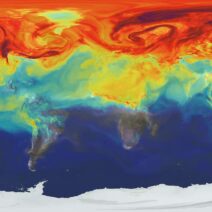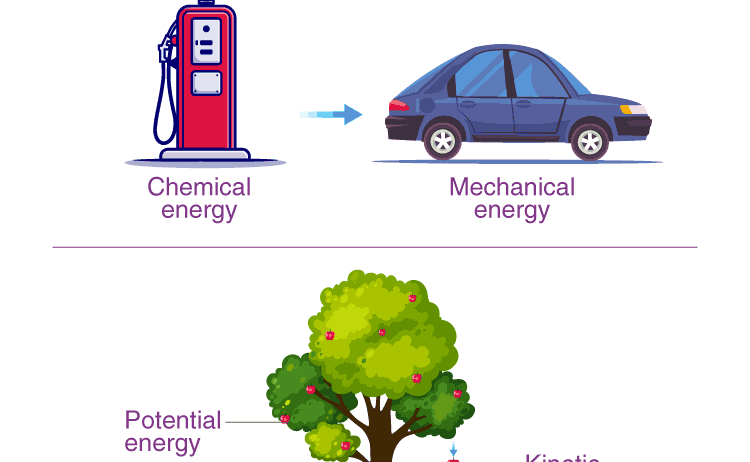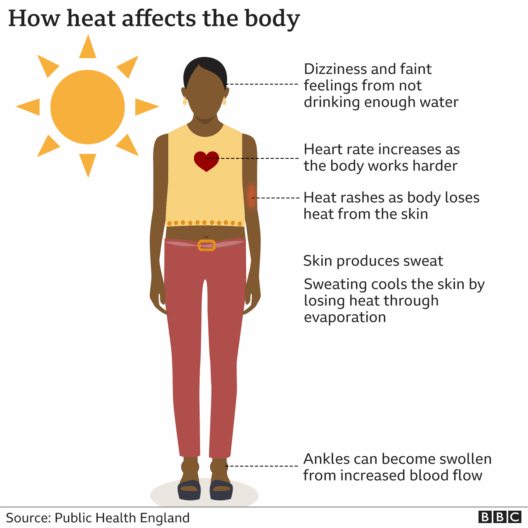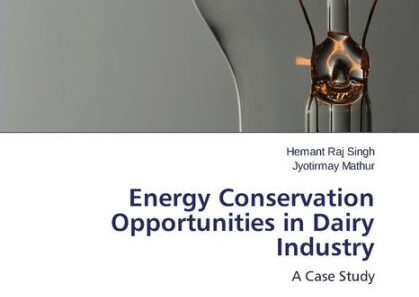The Law of Conservation of Energy is a foundational principle in physics that asserts energy cannot be created or destroyed, only transformed from one form to another. This law operates under a strict framework, governing the behaviors of mechanical movements, thermal dynamics, and chemical reactions among various systems. Understanding the complexities of this law necessitates an exploration of its application across different contexts and the nuances that may challenge its validity under certain conditions.
To grasp the breadth of the Law of Conservation of Energy’s applicability, one must first delve into the various forms of energy that are commonly encountered: kinetic, potential, thermal, chemical, and nuclear energy, among others. Each type possesses distinct characteristics and behaviors, yet they all converge towards the ultimate tenet of energy transformation. For instance, consider a roller coaster; at the apex of the ride, potential energy is maximized. As the coaster descends, this potential energy is converted into kinetic energy, demonstrating the seamless transition dictated by the conservation law. Notably, even mechanical energy dissipation due to friction emphasizes energy transfer while adhering to the overarching principle.
Furthermore, the prominence of the conservation law becomes palpable in thermodynamic systems. Heat engines exemplify the conversion of thermal energy into mechanical work. Despite inevitable energy losses due to factors such as entropy and heat dissipation, the fundamental requirements of energy conservation remain intact. These instances accentuate the law’s resilience, yet they also illustrate an inherent complexity within real-world applications where energy transitions do not occur in an idealized vacuum.
However, the application of the Law of Conservation of Energy is often scrutinized in the context of modern physics, particularly when considering principles of quantum mechanics and relativistic frameworks. In quantum physics, energy appears to exhibit peculiar behaviors that can challenge traditional interpretations of conservation. Quantum fluctuations may seemingly allow for temporary violations of energy conservation at microscopic scales, wherein virtual particles emerge and annihilate within ephemeral timeframes dictated by the Heisenberg Uncertainty Principle. Herein lies a paradox that compels scientists to reconsider energy conservation on both macroscopic and microscopic levels.
Moreover, relativistic implications of energy conservation manifest starkly in Einstein’s famous equation, E=mc², which posits the interconvertibility of mass and energy. In scenarios involving nuclear reactions, such as fission and fusion, minute amounts of mass are converted into substantial energy quantities. This conversion does not negate the conservation principle; rather, it expands its realm, revealing a profound interconnectedness between mass and energy that deviates from classical interpretations and requires acknowledgment of atomic interactions. The layering of these concepts not only underscores the law’s utility but also highlights instances where its traditional formulation confronts complex realities.
In addition to scientific nuances, the Law of Conservation of Energy must be viewed within environmental and socio-economic frameworks. For instance, energy systems that focus on renewable sources strive to align with conservation principles by harnessing solar, wind, and hydro energy. However, challenges arise in storage and conversion efficiency. Technologies such as batteries encounter limitations in their ability to retain energy without losses, inadvertently prompting dialogues about energy sustainability and future practices. Understanding these limitations fosters a critical discourse, encouraging innovations that propel society towards a more efficient energy landscape.
Moreover, the fundamental understanding of energy conservation can play a pivotal role in policy-making and education. Promoting awareness of energy consumption in everyday life is vital in mitigating ecological impacts. Saving energy through insulation, energy-efficient appliances, and vigilant usage patterns exemplifies how individuals can contribute to a larger movement of conservation. Ultimately, these small actions accrue into significant impacts, reinforcing the overarching principle that energy must be carefully managed and utilized.
Critically, the Law of Conservation of Energy does encounter limits within emergent fields such as thermodynamics at micro and macro scales—especially when discussing non-equilibrium systems and chaotic dynamics. The discernible distinction between closed and open systems underscores the necessity for context when applying the law. In open systems, energy exchange with the surroundings complicates energy accounting. For example, ecosystems exhibit energy transfer complexities, wherein energy is absorbed, transformed, and dissipated through intricate networks. Thus, energy conservation must be contextualized within these exchanges to yield invaluable insights.
Perhaps one of the law’s most significant implications is in the context of climate change and its alignment with conservation of energy principles. The Earth’s energy balance is delicate and influenced by human activity and natural processes. Climate models rely on energy conservation to predict outcomes of greenhouse gas emissions and their effects on global temperatures. As energy conservation remains a central tenet in these models, it is imperative that global efforts emphasize reducing carbon footprints through efficient energy practices.
In summary, while the Law of Conservation of Energy presents itself as an unwavering principle in physics, its applicability is rife with contextual nuances and exceptions that demand thorough understanding. The interplay between different energy forms reveals a spectrum of possibilities, augmented by quantum mechanics and relativity’s revolutionary implications. Beyond scientific dialogue, the law’s relevance in environmental stewardship cannot be overstated. By harnessing its foundational principles, society is better equipped to address the pressing challenges of energy sustainability and climate change. Ultimately, acknowledging the breadth and limitations of the Law of Conservation of Energy paves the way for informed discourse and action, forging pathways towards a more sustainable future.








